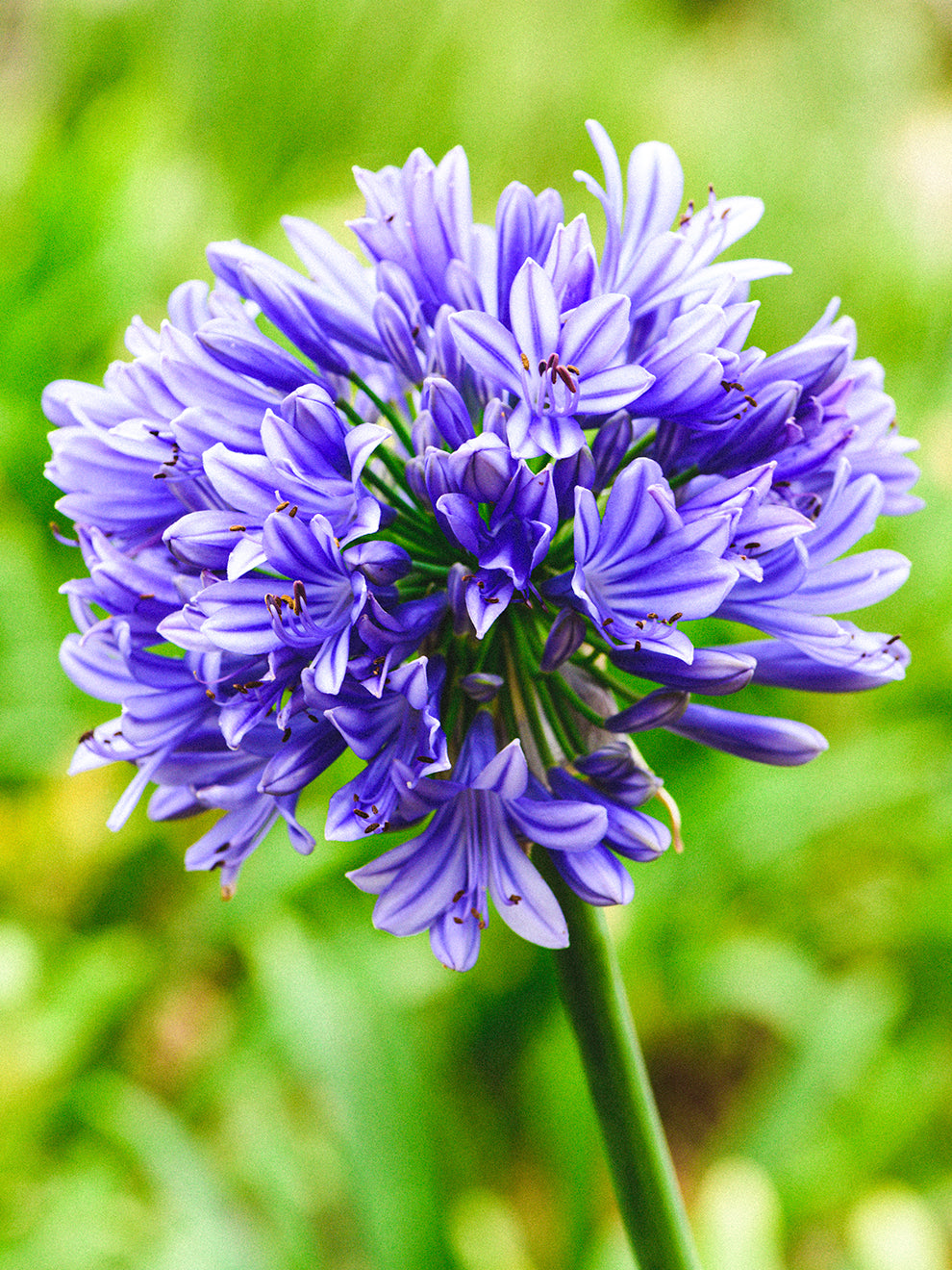Spectacular Agapanthus: Enhancing Your Garden's Charm
Spectacular Agapanthus: Enhancing Your Garden's Charm
Blog Article
Understanding the Art of Agapanthus Treatment: Important Steps for Healthy And Balanced Development and Dynamic Blossoms
In the world of horticulture, the growing of agapanthus stands as a rewarding undertaking for those that look for to support these classy flowering plants. With their striking flowers and elegant vegetation, agapanthus has recorded the attention of garden enthusiasts worldwide. However, attaining ideal growth and lively blossoms calls for a nuanced method that incorporates different important actions. From choosing the best variety to grasping pruning methods, the journey in the direction of growing growing agapanthus plants is diverse and holds the essential to opening the full possibility of these organic gems.

Choosing the Right Agapanthus Variety

When selecting the appropriate Agapanthus selection for your yard, take into consideration aspects such as climate viability, flower shade, and development behavior. Furthermore, think about the environment in your region to make sure the Agapanthus range you select can prosper in your details problems. Understanding the development routine of various Agapanthus varieties is crucial for appropriate placement within your garden.
Ideal Planting Problems
Thinking about the optimum ecological requirements is necessary for successful Agapanthus farming. Agapanthus prospers in well-draining dirt with a somewhat acidic to neutral pH level. When growing, select an area that receives complete sunlight to partial shade. In hotter environments, providing some mid-day color can prevent scorching of the fallen leaves. Agapanthus plants are sensitive to chilly temperatures and ought to be shielded from frost during winter season.
To make sure healthy and balanced development and vivid blooms, plant Agapanthus bulbs at a depth of regarding 2-4 inches and space them 8-12 inches apart. Mulching around the base of the plants aids maintain wetness and reduces weed development.
Watering and Feeding Tips
Keeping appropriate wetness levels and providing crucial nutrients are key aspects in the care routine for Agapanthus plants. When it comes to sprinkling Agapanthus, it is essential to strike a balance. These plants favor regularly wet soil but are vulnerable to root rot if overwatered.
Feeding Agapanthus is necessary for promoting healthy and balanced growth and respected flowers. Use a well balanced fertilizer, such as a 10-10-10 formula, in the early springtime as new growth arises. Repeat this application every 6-8 weeks throughout the expanding season. Prevent excessive fertilization, as it can cause lush vegetation at the expense of flowers. Always adhere to the producer's guidelines for appropriate dilution and application techniques. By complying with these watering and fertilizing ideas, helpful hints you can ensure your Agapanthus plants flourish and produce vibrant, resilient blooms.
Trimming Techniques for Agapanthus
Trimming Agapanthus plants at the ideal times and with proper strategies is essential for keeping their health and promoting optimal growth and flowering. The suitable time to trim Agapanthus remains in late winter months or early spring prior to brand-new development emerges. Start by eliminating any kind of yellowing or dead fallen leaves near the base of the plant. Cut them as close to the ground as feasible without harming the arising shoots.
For flowered stems, wait until the blooms have actually withered and after that cut them back to the base. This not only cleans up the plant's look however likewise encourages the development of new flower buds. Deadheading invested blossoms can likewise redirect the plant's energy right into generating even more flowers instead of setting seeds. However, if you intend to collect seeds for breeding, leave some blossoms to mature and completely dry on the plant.
Keep in mind to use clean, sharp tools to make specific cuts and lower the danger of introducing diseases. Agapanthus. Normal pruning will certainly aid keep your Agapanthus looking healthy and cool while making certain an abundant screen of gorgeous blooms
Dealing With Usual Parasites and Conditions
After guaranteeing proper trimming strategies for Agapanthus, it is essential to address usual insects and diseases that can impact the health and wellness and vigor of these plants. One typical parasite that impacts Agapanthus is the Agapanthus gall midget.
Additionally, Agapanthus plants can suffer from root rot if they are planted in improperly draining pipes dirt. By being cautious and taking prompt action against parasites and illness, you can aid your Agapanthus plants grow and generate vibrant blooms. Agapanthus.
:strip_icc()/snow-storm-agapanthus-18f19b9a-3e7c6c88441b4127a9015f9a9fecec59.jpg)
Verdict
Finally, grasping the art of agapanthus care involves selecting the right selection, offering perfect planting conditions, correct watering and fertilizing, appropriate trimming methods, and addressing usual bugs and he has a good point illness. By following these necessary actions, you can make sure healthy and balanced growth and dynamic flowers for your agapanthus plants. Keep in mind to regularly check and keep your plants to advertise their overall well-being and longevity.
To make sure healthy and balanced development and vibrant blossoms, plant Agapanthus bulbs at a deepness of regarding 2-4 inches and space them 8-12 inches apart. By adhering to these watering and fertilizing tips, you can guarantee your Agapanthus plants prosper and produce vivid, lasting blooms.
One typical insect that influences Agapanthus is the Agapanthus gall midge. Furthermore, Agapanthus plants can endure from root rot if they are grown in badly have a peek here draining dirt. By following these necessary steps, you can make certain healthy growth and lively blooms for your agapanthus plants.
Report this page